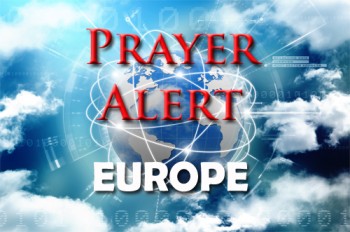Displaying items by tag: Canary Islands
Canary Islands: wildfire forces 3,000 to evacuate
Almost 3,000 people have had to evacuate their homes in Tenerife as a wildfire, caused by embers left smouldering from an August blaze, re-ignited on the Spanish island. Unseasonably hot weather (up to 39°C) sparked the flames, which engulfed the north east of the island on 5 October. About 2,400 people have been evacuated from the town of Santa Ursula and another 600 from La Orotava. Teams of firefighters and six water-dropping helicopters worked to battle the fire overnight. The August fire had been brought under control but was never completely extinguished, with embers still burning in the forest. The firefighters have requested support from the army’s military emergency unit. The island’s councillor in charge of emergencies, Blanca Perez, told local radio this fire ‘has been stabilised, we are seeing how it evolves to determine if in a few hours residents can return to their homes’.
Canary Islands: a month of volcanic activity
Unfortunately, there has been no change in activity in the Canary Islands volcano; the eruption continues to feed the growing lava flow field at high effusion rates. Its northern margins continue to be active and advancing south into areas already buried under lava flows. Consequently the government has had to evacuate another adjacent area.
Canary Islands volcano danger growing
Lava from the Cumbre Vieja volcano, which has been erupting for four weeks, has destroyed even more homes and buildings. The two new vents that opened last week have partially collapsed, causing lava to flow in multiple directions. The local airport was closed again for two days and 800 more homes were evacuated as rapid flows of molten lava moved towards them, bursting homes into flames. There were 64 more seismic movements recorded, the strongest measuring 4.1. There are no signs of eruptions and earthquakes stopping soon. Over 1,100 buildings and 600 hectares of land had been destroyed by 13 October, and the next day the lava flows expanded again with even more evacuations ordered in three more areas.
Canary Islands volcano ‘much more aggressive’
The Canary Islands volcano has blown open two more fissures, and intense activity has worsened, three weeks after the original eruption. The prompt evacuation of more than 6,000 people since the 19 September eruption helped prevent casualties. By 3 October the lava had destroyed or partially destroyed 1,000+ buildings, including homes and farming infrastructure. By 7 October it had destroyed 21 miles of roads and entombed large areas of land, with no indication of lessening.
Spain: update on La Palma volcano
Lava from La Palma’s volcano has now reached the Atlantic Ocean. When this happens there is a chemical reaction as hot lava boils the colder sea water. Volcanologist Dr Robin Andrews said, ‘It creates a steam of hydrochloric acid, water vapour and bits of ash. Volcanic explosions are possible because lava entering sea water creates a pressure-cooker situation that throws out volcanic debris.’ Authorities have set up an exclusion zone around the lava, including in the sea, to keep people away from any potential danger. Three coastal villages are now locked down. Please continue to pray for the hundreds of families whose homes were destroyed by lava, the 6,000+ evacuated people, the owners of destroyed banana plantations and businesses, and the pupils and parishioners of destroyed schools and a church. Authorities declared La Palma a disaster zone. Pray there will be enough financial support for everyone affected.
Spain: Canary Islands volcano eruption
A volcano on the island of La Palma began erupting on 19 September, sending streams of lava and plumes of smoke and ash into the air. A small earthquake preceded the eruption, causing thousands of residents to flee their homes and prompting authorities to begin evacuating the infirm and farm animals from nearby villages before the volcanic activity. By 20 September three streams of lava were pouring down towards the sea, moving at 2,300 feet per hour, and 6,000 people had evacuated their homes. Two days later new cracks started spewing more lava and four earthquakes shook the area. Families raced to save what they could from their homes in a two-hour window granted by emergency workers. The lava had already destroyed 300 homes, and overwhelmed roads, farms, a school, and swimming pools. Pray for those in temporary shelters not knowing when they will return home, fearing their homes might be engulfed by lava. Seismologists played down the attendant risk of an Atlantic tsunami.





